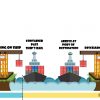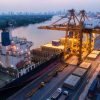This post is also available in:
 English
English  日本語
日本語  ไทย
ไทย
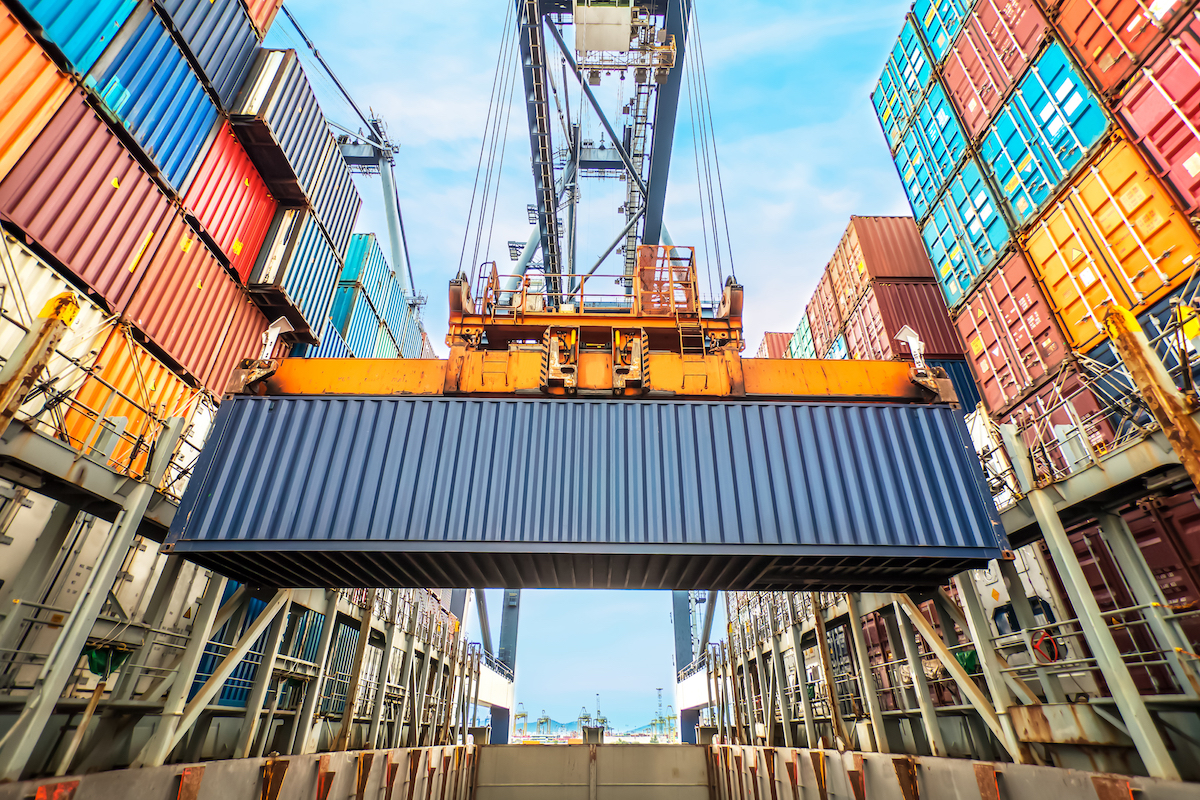
Containers are necessary for International Logistics and there are various types of containers. It is important to understand the characteristics of each container and select the appropriate one. There are various requests in our group companies which have the number of containers shipped more than 2,000 container per month. Based on the information we gained in that experience, we would like to explain containers used for logistics from the various point of view today.
Contents
All about Containers by Animation Video
Type of Containers
Containers used for International Logistics are generally classified into the following types. We use different type of containers according to cargo.
Dry container

It is a general container. There are 3 types of 20’feet, 40’feet, 40’feet high cube. A dry containers are also used when shipping automobile parts, molds, plastic molded items, cosmetics, raw materials, steel products, wood and other things called general cargo and dangerous goods (no temperature control required).
Reefer container
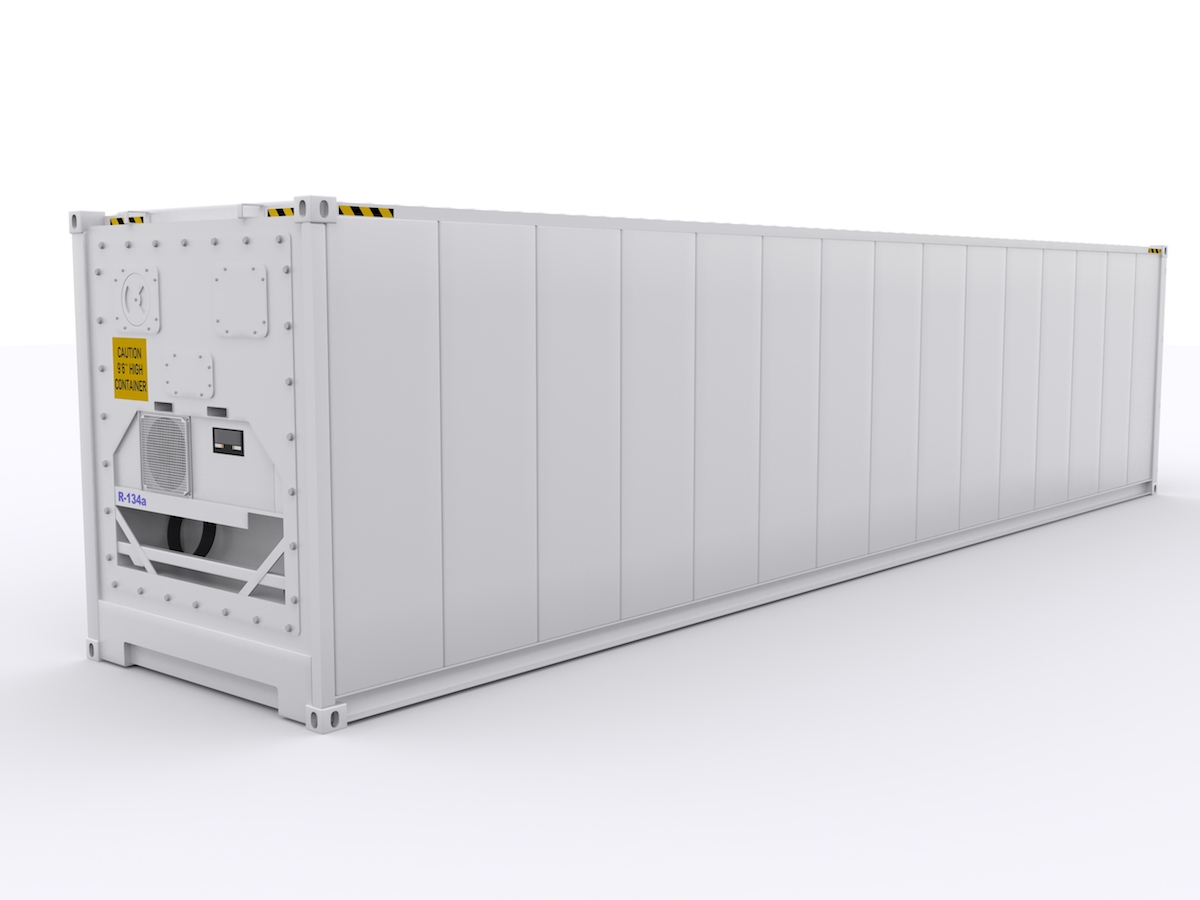
It is a container that heat insulation is used, so temperature and humidity can be adjusted. Temperature control range is -25 to + 25 degrees (depends on shipping company). Shipping · Handling costs are higher than dry containers. It is mainly used for fruits, frozen foods, fresh flowers, chemicals and so on, which require temperature control.
The electric charge at the terminal and transportation
Reefer container must maintain the adjusted temperature inside the container while transportation and waiting for the vessel to leave at the terminal.
For that reason, the trailer must have a special generator and the electric supplying facility is also required in the terminal. That’s why the additional charges will be incurred as the container must continue to be supplied electricity during the transportation and at the terminal.
Open top container
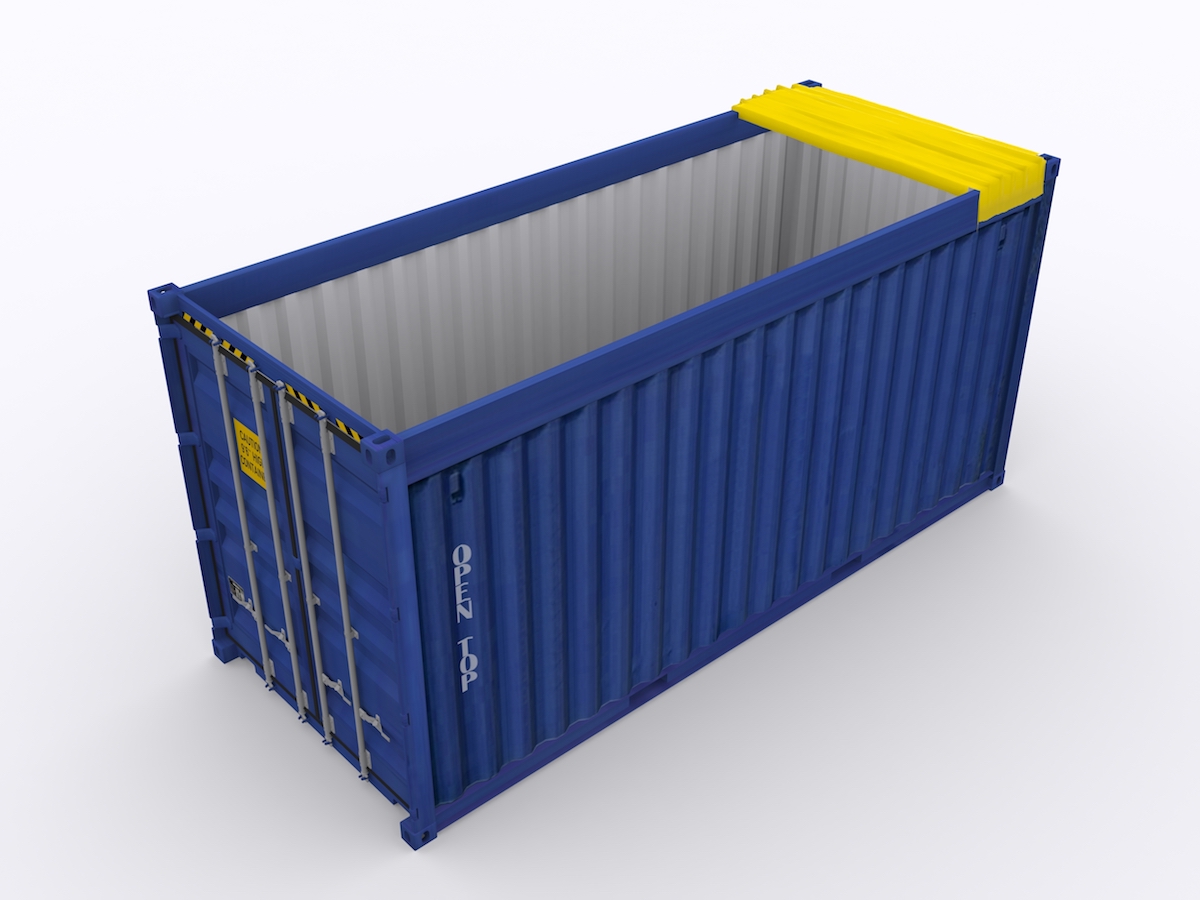
It is a container with no ceiling. It is used when the height of the cargo exceeds the high cube container (about 2.7 m). The vessel can not stack another container on top of this open top container, so expenses will be higher as there are limited places available for loading. During the shipment, we are placing a sheet on the ceiling so that the cargo will not get wet by the rain.
Flat rack container
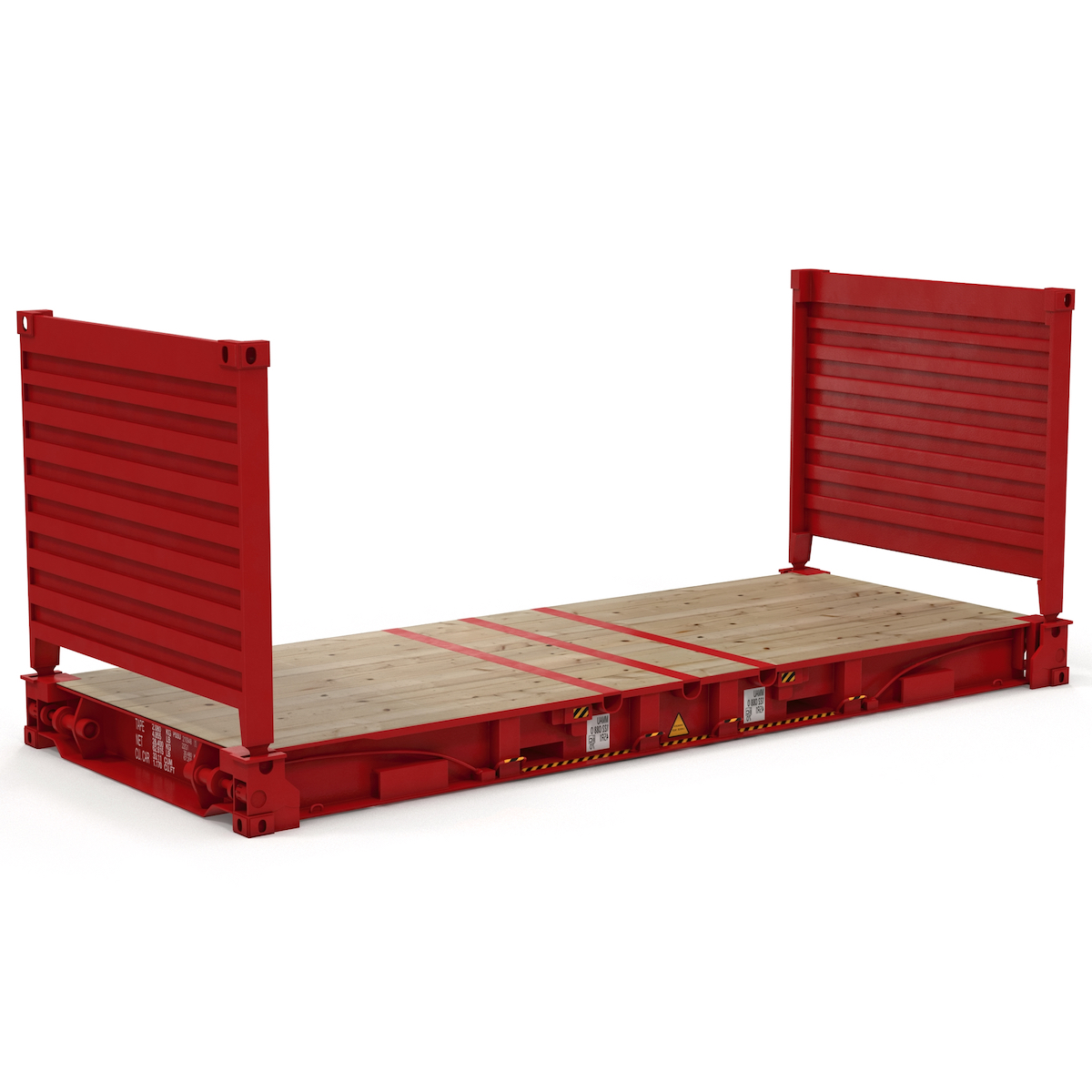
It is a container with no wall and ceiling. It is used in the case when a size does not fit in a general container. Also, in the case of cargoes that are difficult to load in dry containers, flat rack containers are used. As with the open top container, the cost is expensive as there are limited places that can be loaded on the vessel.
ISO Tank Container
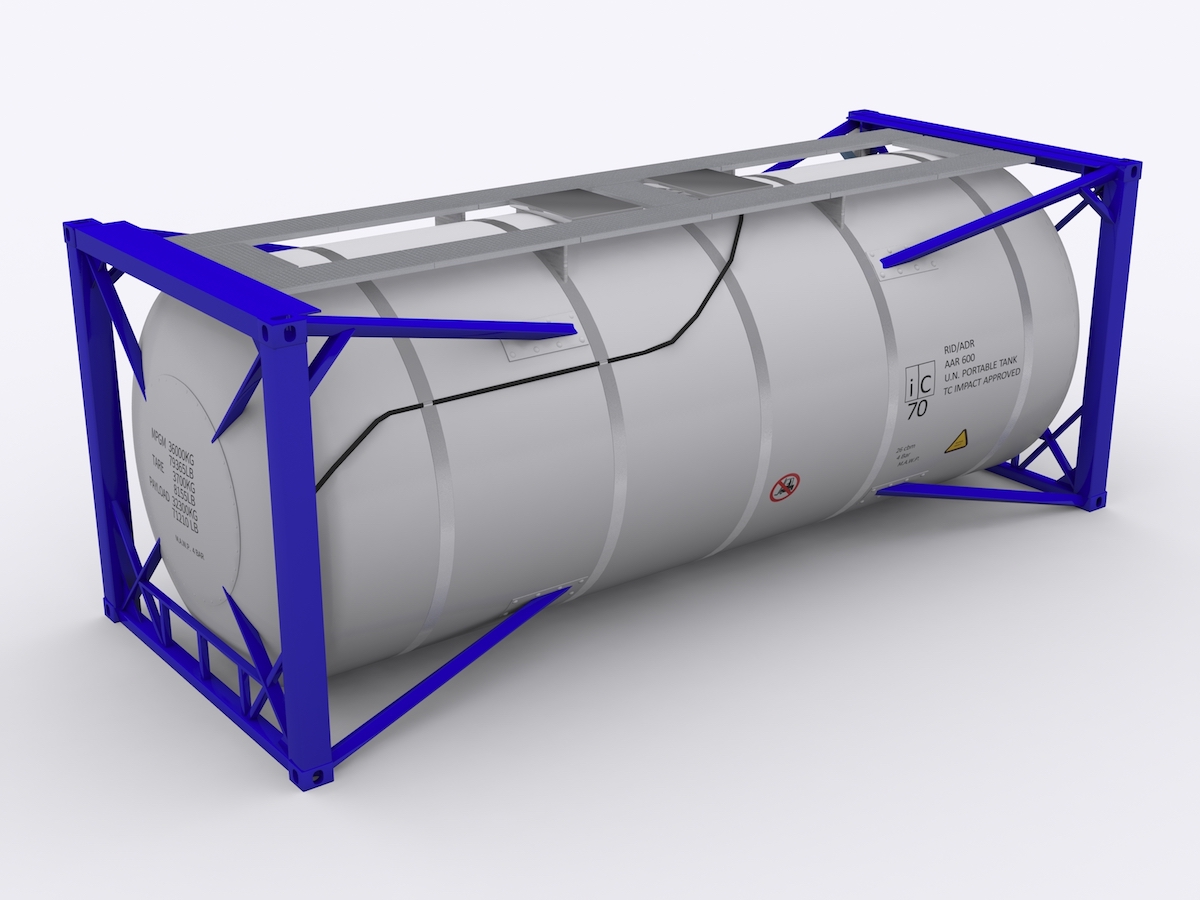
It is a container to use when we transport liquid. The capacity that can be loaded depends on the type of tank, and it is about 11,000 liters to 26,000 liters. It is also used when we transport dangerous liquid goods.
In general, the available loading volume by ISO Tank is larger than the transportation by drums in container. Also it is easier for loading and unloading into ISO Tank. It is better to use ISO tank when we deliver the big volume of liquid.
Size of Containers
The size of the container is important to efficiently load cargo. Since there are differences between shipping companies, please confirm the website of each shipping company for details. The inner dimension of the container is important for loading cargo. Basically, it is necessary to understand the following inner dimensions.
Dry container size
20feet container
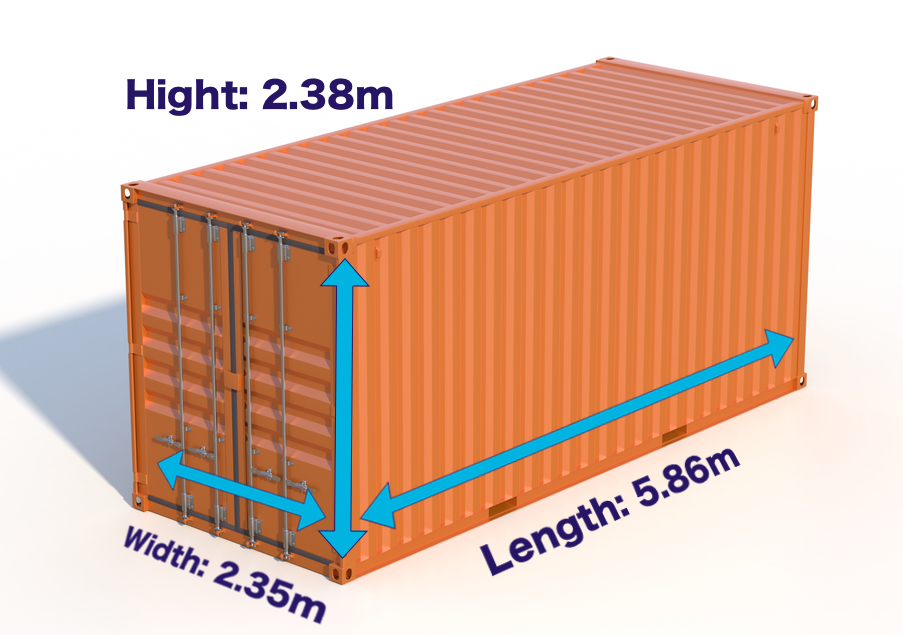
[External dimensions] Length: 6.05 m / width: 2.43 m / height: 2.59 m
[Inside dimension] Length: 5.86 m / width: 2.35 m / height: 2.38 m
40feet container
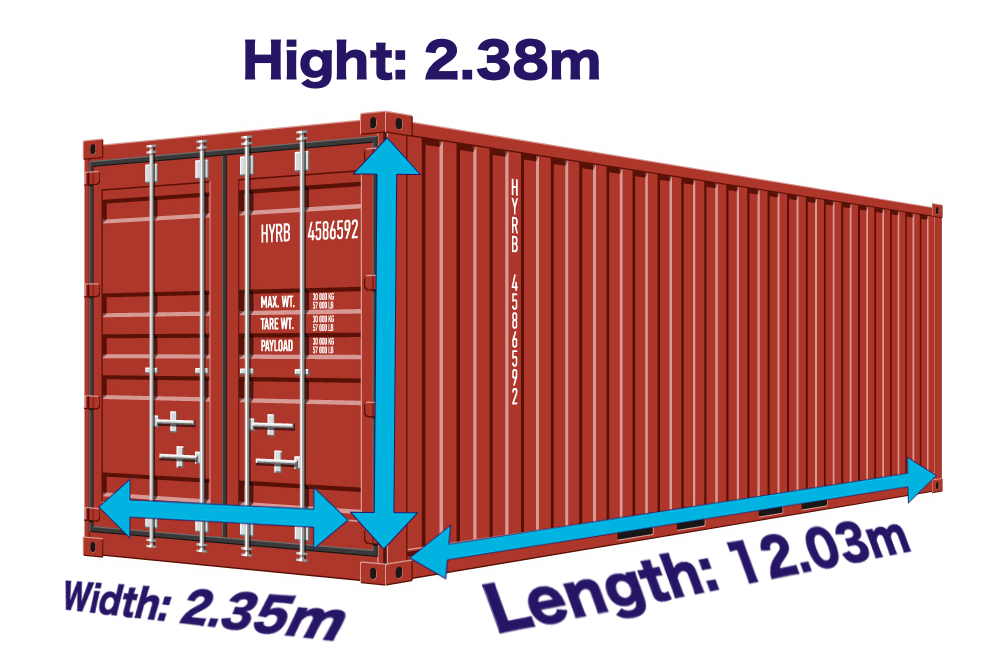
[External dimensions] Length: 12.19 m / width: 2.43 m / height: 2.89 m
Inside dimension】 Length: 12.03 m / width: 2.35 m / height: 2.38 m
It is easy to understand 40feet container is “2 times longer” than 20’feet container.
40feet high cube container
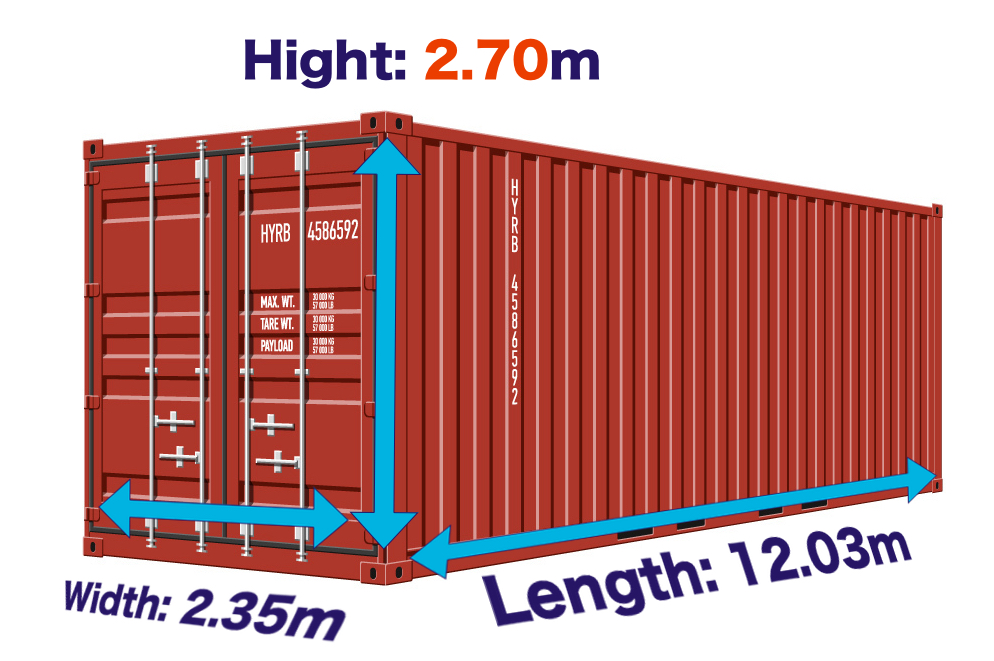
[External dimensions] Length: 12.19 m / width: 2.43 m / height: 2.89 m
Inside dimension】 Length: 12.03 m / width: 2.35 m / height: 2.70 m
The 40 feet high cube just differs from an ordinary 40 feet container in “height”.
Container’s maximum load weight
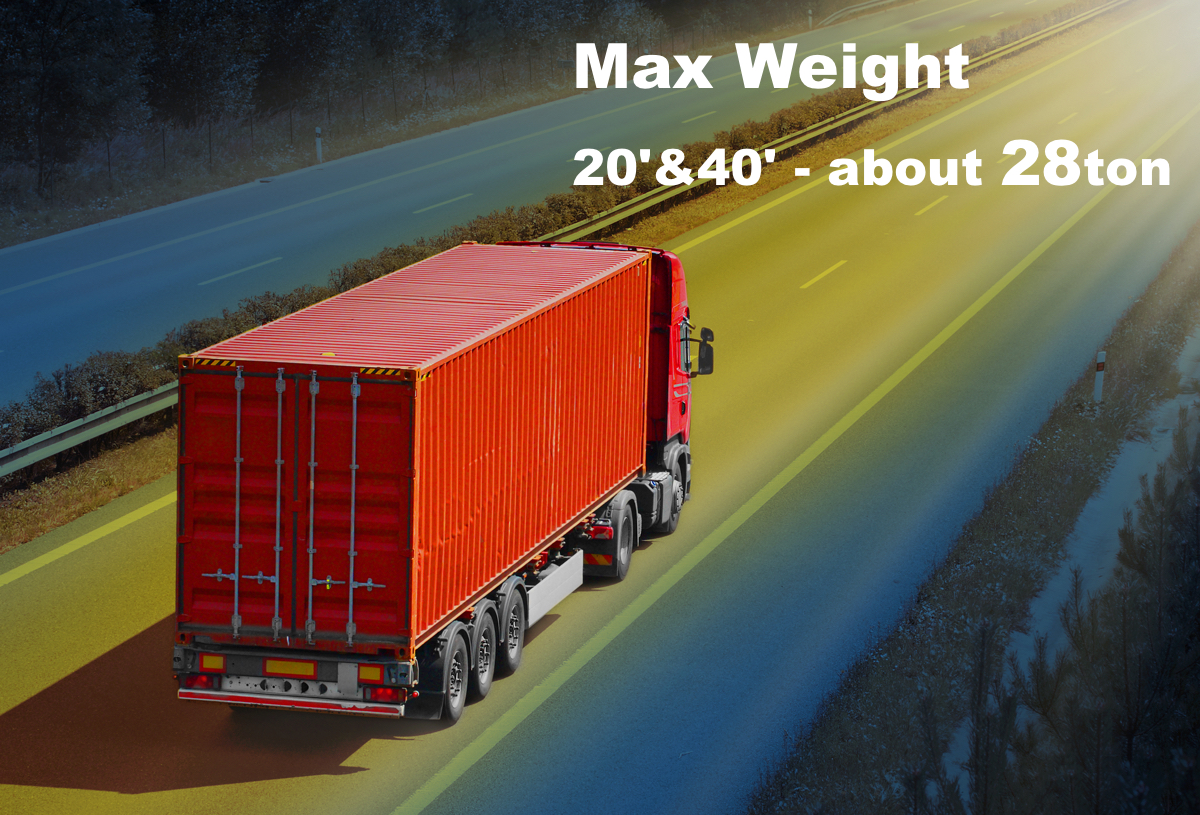
There is a road regulation of the maximum loading weight in Thailand so that there is also the weight limitation of the container loading. The maximum cargo loading weight depends on the shipping company. Please contact to each shipping company for more detail.
20 ‘& 40’: about 28 MT
* When using 3 axis chassis
The point is that the maximum loading weight is the same at both 20feet and 40feet. It is not that 40feet can double the weight of 20feet.
It is also dangerous to transport the heavy cargo in containers. If you exceed the maximum loading weight, not only during the transportation of the road but also when you move the container in the terminal, loading it on the vessel, and unloading it, it will lead to a serious accident.
Container Depot / Container Bumpur

In Thailand, containers of shipping companies are stored and managed in Depo that is contracted. Empty containers are picked up from the designated container depo. Also the containers that finished using were sent back to the container depo at the import side. In Japan it is called the container bumpur.
Container inspection, cleaning, repairing
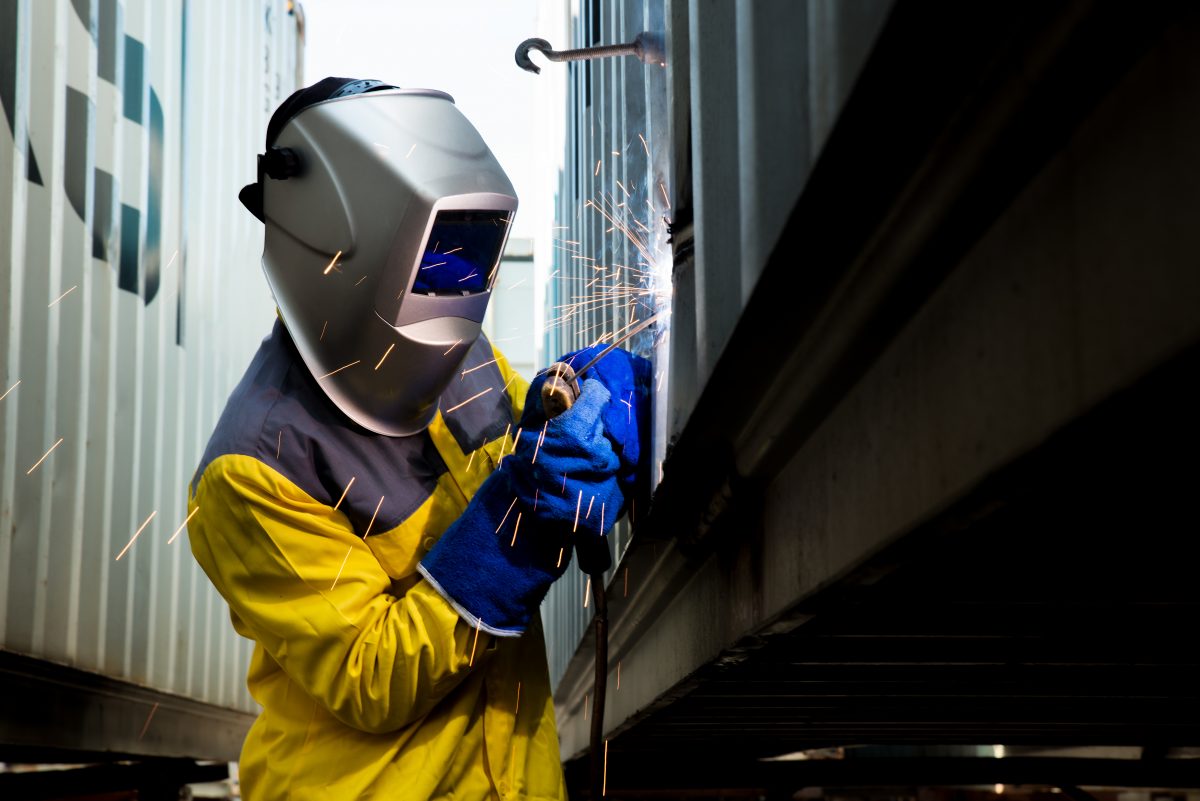
The used containers are returned to the depot and are cleaned. Also, if there are holes in the container, the floor is peeled off, or it is rusted severely, it will be repaired in the container depo.
Frequently occurring problems in Thailand about containers
Container is dirty
This is the most frequent problem that we recognize in Thailand logistics. When making a booking to a shipping company, generally we request a grade A container, but what actually received at the depot might be dirty, smelly, floor is scratching or bad, and there are holes in the ceiling.
If the container delivered to the customer is in such a state they can not load cargo, so we will return to the depot to exchange containers. Transportation costs will be borne by our responsibility.
Delay of container delivery
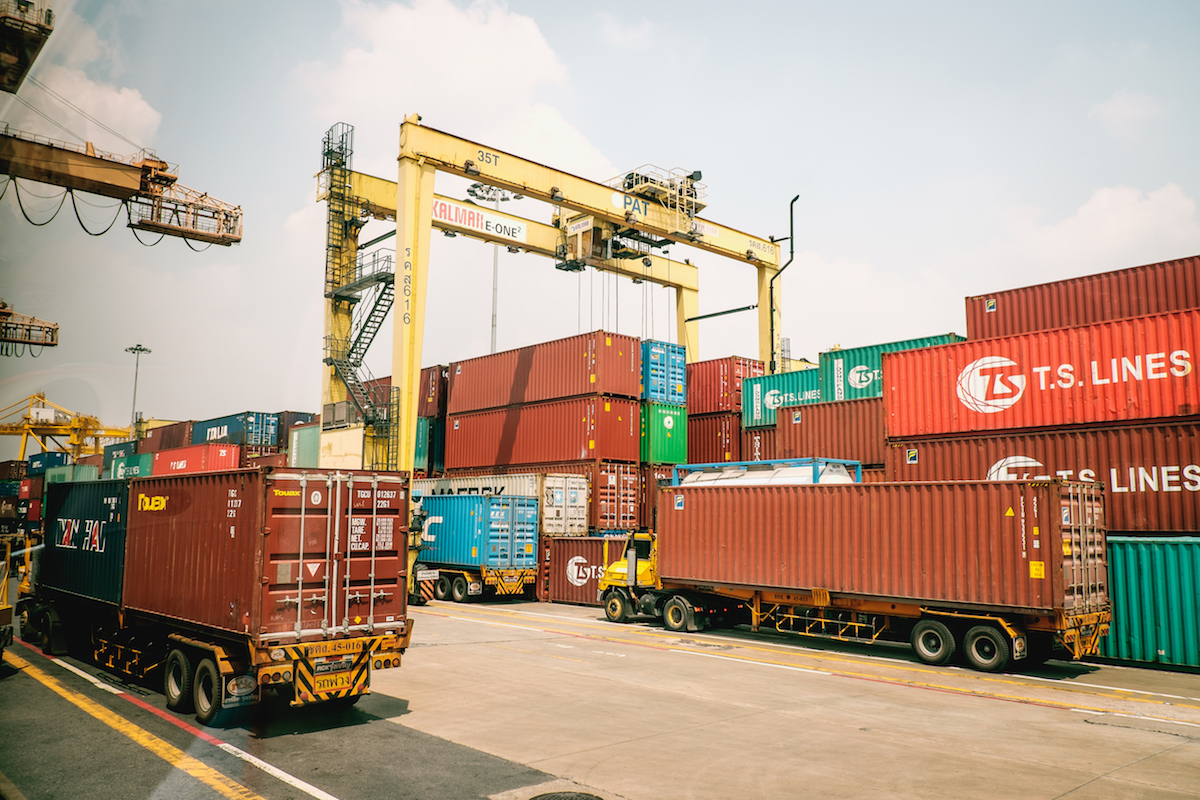
Our company instructs the driver of the trailer picking up the container to inspect before taking over the container in order to avoid such waste.
At the time of picking up this kind of problem container, it is possible to refuse the container allocated from the depot once and receive another container, but the trailer have to go to the end of the line if there is another trailers. If this refusal is to be continued twice and three times, it may not be possible to deliver containers according to the customer’s designated time.
Container cleaning fee
Although it is rarely said from the import side, the state of the container which carried out loading and unloading is the problem of why the cleaning cost occurs although it is very clean. There is a difference between each shipping company, but in general the container used once is inspected and cleaned in the depot, so it can be the cost.
Summary
Throughout the forwarder’s work, we explained all the things related to containers. At our company, we select the best container for safely and efficiently transport cargoes. Also, we do our daily works to avoid problem from occuring as much as possible.


